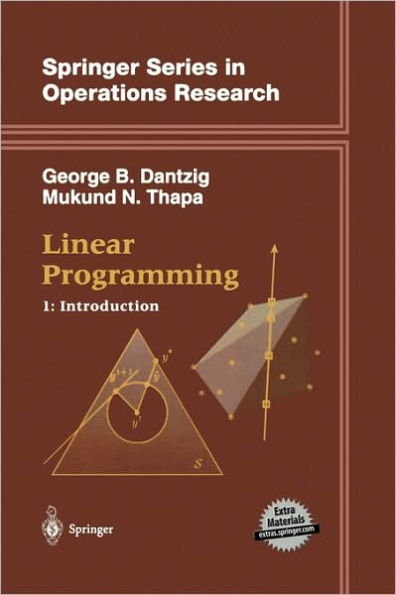Linear Programming 1: Introduction
By George B. Dantzig LINEAR PROGRAMMING The Story About How It Began: Some legends, a little about its historical sign- cance, and comments about where its many mathematical programming extensions may be headed. Industrial production, the flow of resources in the economy, the exertion of military effort in a war, the management of finances—all require the coordination of interrelated activities. What these complex undertakings share in common is the task of constructing a statement of actions to be performed, their timing and quantity(calledaprogramorschedule), that, ifimplemented, wouldmovethesystem from a given initial status as much as possible towards some defined goal. While differences may exist in the goals to be achieved, the particular processes, and the magnitudes of effort involved, when modeled in mathematical terms these seemingly disparate systems often have a remarkably similar mathematical str- ture. The computational task is then to devise for these systems an algorithm for choosing the best schedule of actions from among the possible alternatives. The observation, in particular, that a number of economic, industrial, financial, and military systems can be modeled (or reasonably approximated) by mathem- ical systems of linear inequalities and equations has given rise to the development of the linear programming field.
1110944897
Linear Programming 1: Introduction
By George B. Dantzig LINEAR PROGRAMMING The Story About How It Began: Some legends, a little about its historical sign- cance, and comments about where its many mathematical programming extensions may be headed. Industrial production, the flow of resources in the economy, the exertion of military effort in a war, the management of finances—all require the coordination of interrelated activities. What these complex undertakings share in common is the task of constructing a statement of actions to be performed, their timing and quantity(calledaprogramorschedule), that, ifimplemented, wouldmovethesystem from a given initial status as much as possible towards some defined goal. While differences may exist in the goals to be achieved, the particular processes, and the magnitudes of effort involved, when modeled in mathematical terms these seemingly disparate systems often have a remarkably similar mathematical str- ture. The computational task is then to devise for these systems an algorithm for choosing the best schedule of actions from among the possible alternatives. The observation, in particular, that a number of economic, industrial, financial, and military systems can be modeled (or reasonably approximated) by mathem- ical systems of linear inequalities and equations has given rise to the development of the linear programming field.
179.0
In Stock
5
1

Linear Programming 1: Introduction
435
Linear Programming 1: Introduction
435Hardcover(1997)
$179.00
179.0
In Stock

Product Details
| ISBN-13: | 9780387948331 |
|---|---|
| Publisher: | Springer New York |
| Publication date: | 01/27/1997 |
| Series: | Springer Series in Operations Research and Financial Engineering |
| Edition description: | 1997 |
| Pages: | 435 |
| Product dimensions: | 7.01(w) x 9.25(h) x 0.04(d) |
From the B&N Reads Blog
